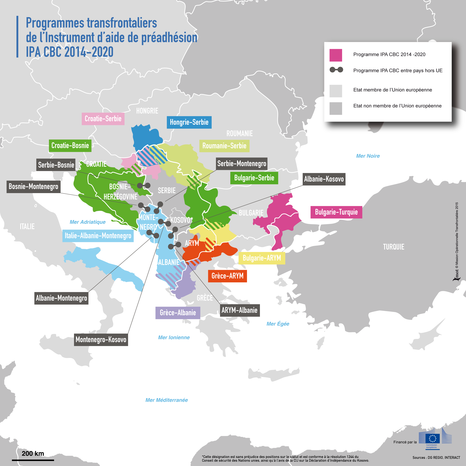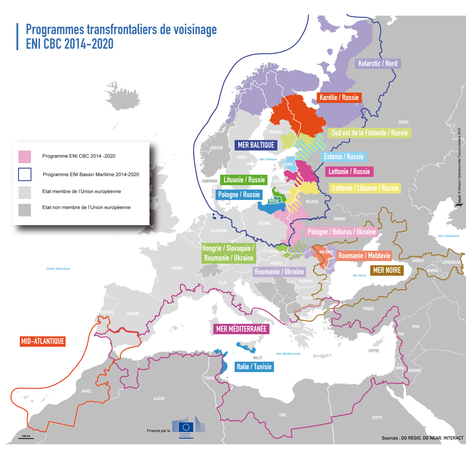Cross-border cooperation
Functioning of cross-border cooperation programmes
Competent authorities
In the 2014-2020 programming period, the cooperation programmes set out an intervention strategy for each cooperation territory. It contains a territorial diagnosis determining the priority axes and investment priorities as well as specific objectives for each of these axes. Each programme shall also present the competent authorities responsible for implementing the programme:
- The managing authority: It is reponsible for the management and implementation of the cooperation programme. Every year, it shall submit an annual implementation report to the European Commission. The managing authority may be a national, regional or local public body or an EGTC
- The certifying authority: It draws up and submits to the Commission the certified accounts of expenditure and payment applications. It keeps the accounts and certifies the accuracy and that the expenditure entered in them complies with national and Community rules. This function can be added to that of the managing authority.
- The audit committee: As a national, local or regional authority nominated by the managing authority, the audit authority ensures the control of the good functioning of the management system and that control is carried out on the basis of an appropriate sample of operations.
- The monitoring committee: It ensures that the implementation of the operational programme is effective, and assesses at least once a year the progress made and the results achieved. It is composed of representatives of the authorities of the Member States and the programme partners.
- The steering committee: The monitoring committee may decide to set up a steering committee responsible for the project selection.
- The Joint Secretariat (former Joint Technical Secretariat): It is established by the managing authority. It is responsible for assisting the managing authority and the monitoring committee in their functions. It also informs potential beneficiaries about funding opportunities and assist beneficiaries in implementing projects.
- The National authority: it ensures the procedure for the implementation of funds on behalf of its country in case the managing authority is not in the country.
Procedures
In order to be eligible for funding under cross-border cooperation, the project must involve at least two countries, one of which is from the European Union. The operation itself can be implemented in a single State if the cross-border benefits are identified. In addition, an EGTC may be the sole beneficiary of funding provided that it has been established by bodies from at least two countries participating in the programme.
If an operation has two or more beneficiaries, a “lead beneficiary” is designated. The latter manages the financial and operational implementation of the entire operation. He must be located in a Member State participating in the cooperation programme unless all the beneficiaries agree on the choice of an authority of a third country.
The most significant new development compared to the previous programming periods is the introduction of performance and implementation indicators for programmes:
- Result indicators measure the contribution of the programme to the objective set, and are determined by axis and by specific objectives.
- Output indicators measure a project’s contribution to a specific objective of the cooperation programme. They are supported by the deliverables of the operations.
EU external borders
Instrument for Pre-Accession Assistance (IPA)
Established in 2006 by Council Regulation (EC) No 1055/2006, the IPA is the EU’s financial instrument for assisting acceding countries. This instrument is structured around 5 components:
- Assistance for Transition and Institution Building
- Cross-border Cooperation
- Regional Development
- Human Resources Development
- Rural Development
Components III to V work in the same way as the European Structural Funds, to prepare the beneficiary countries for accession to the EU. There are 17 cross-border cooperation programmes under IPA.
European Neighbourhood instrument
Council Regulation (EC) No 232/2014 regulates the ENI for the 2014-2020 programming period. This ENI provides the majority of funds for projects carried out in partnership with one of the 16 EU partner states. The ENI makes it possible to carry out bilateral, regional, cross-border and neighborhood-wide cooperation projects. There are 20 cross-border cooperation programmes under the ENI.
More information on the functionning of : Interreg IVA - Interreg IIIA.



